Introduction of Bathroom Tile
Bathroom tile is more than just a decorative choice—it’s a practical and essential element that influences the durability, hygiene, and overall ambiance of your bathroom space. Whether you’re remodeling an existing bathroom or designing one from scratch, the selection of bathroom tile can significantly impact both the functionality and style of your projct. The bathroom tile provides a moisture-resistant surface that protects walls and floors from water damage, mold, and mildew. Beyond its practical role, bathroom tile is available in an almost endless variety of colors, patterns, sizes, and textures, enabling you to create anything from a minimalist modern retreat to a lavish spa-like oasis.
The innovtions in tile manufcturing have expanded the choices available to homeowners and designers. You can now find bthroom tile options that mimic natural stone, wood, or even fabric textures, while maintaining the hardiness and water resistance that tiles are known for. The basics of bathroom tile—what it is, why it’s so beneficial, and how you can use it effectively to transform your bathroom into a space you’ll love.
Bathroom tile may seem simple, but understanding the variety and characteristics of different types can be overwhelming. These options help you choose that balances style, cost, and functionality.
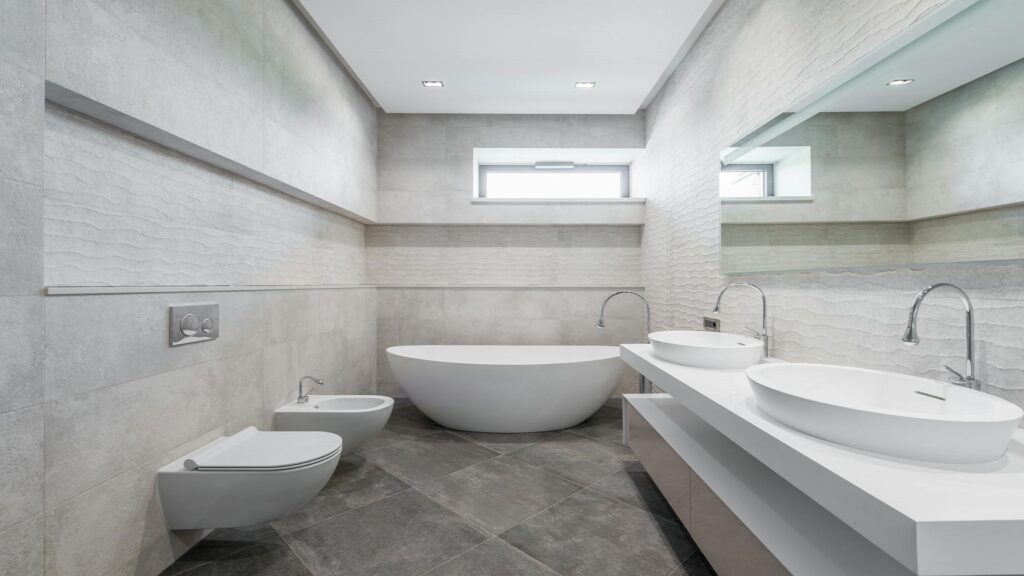
What is Bathroom Tile?
Bathroom tile refers to any tile specifically designed and suited for use in the bathroom environment. This typically means materials that can withstand exposure to water, humidity, and temperature fluctuations while remaining easy to clean and maintain.
Tiles used in bathrooms are generally made from ceramic, porcelin, natural stone, or glass. Each of these materials has distinct qualities that make them suitable for different areas of the bathroom:
- Ceramic Tile: Made from clay and baked at high temperatures, ceramic tiles are affordable and come in many finishes. They are often glazed, making them resistant to water and stains. Ceramic tiles are widely used on bathroom walls and sometimes floors.
- Porcelain Tile: Porcelain is a type of ceramic tile made from finer clay and fired at higher temperatures. It is denser, harder, and less porous than standard ceramic, making it ideal for bathroom floors and areas exposed to heavy moisture.
- Natural Stone Tile: Materils like marble, granite, slate, and travertine offer a unique, luxurious look due to their natural variations. They require more maintenance, sealing, and care to avoid staining and water damage.
- Glass Tile: Glass tiles are often used for accents or backsplashes. They add a glossy, reflective surface that can brighten the bathroom and create visual interest. Glass is waterproof but can be slippery when used on floors.
Bathroom tile is measured and installed in many sizes, from tiny mosaic pieces to large-format slabs. The tile size and layout dramatically influence the room’s style and perception of space. For example, larger tiles can make a small bthroom appear more spacious due to fewer grout lines.
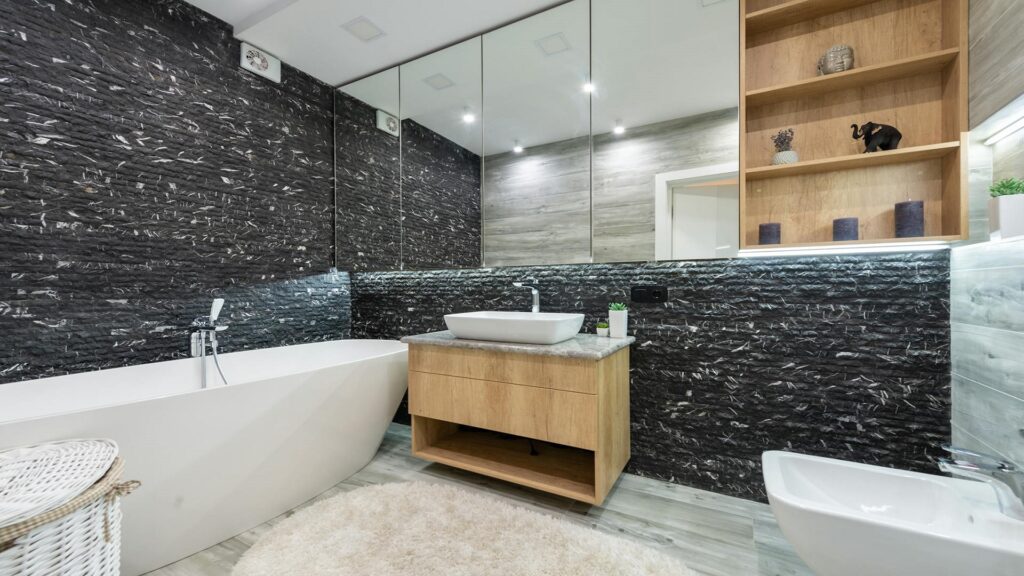
Benefits of Bathroom Tile
Choosing the right bathroom tile comes with several distinct advantages that affect the usability, appearance, and longevity of your bathrom. Bathroom tile contributes significantly to maintaining a hygienic environment by resisting moisture and inhibiting mold growth.
Here are some of the primary benefits:
1. Water and Moisture Resistance
Bathroom tile is designed to resist water penetration. Unlike painted walls or wallpaper, tiles and their grout lines prevent moisture from seeping into the walls and floor structure. This resistance helps avoid costly water damage, structural issues, and mold development.
2. Durability and Longevity
Tiles are highly durable and can last decades if installed and maintained properly. Porcelain and ceramic tiles especially withstand heavy foot traffic and regular cleaning without wearing down. Their resistnce to scratches and stains also preserves the bathroom’s aesthetc appeal over time.
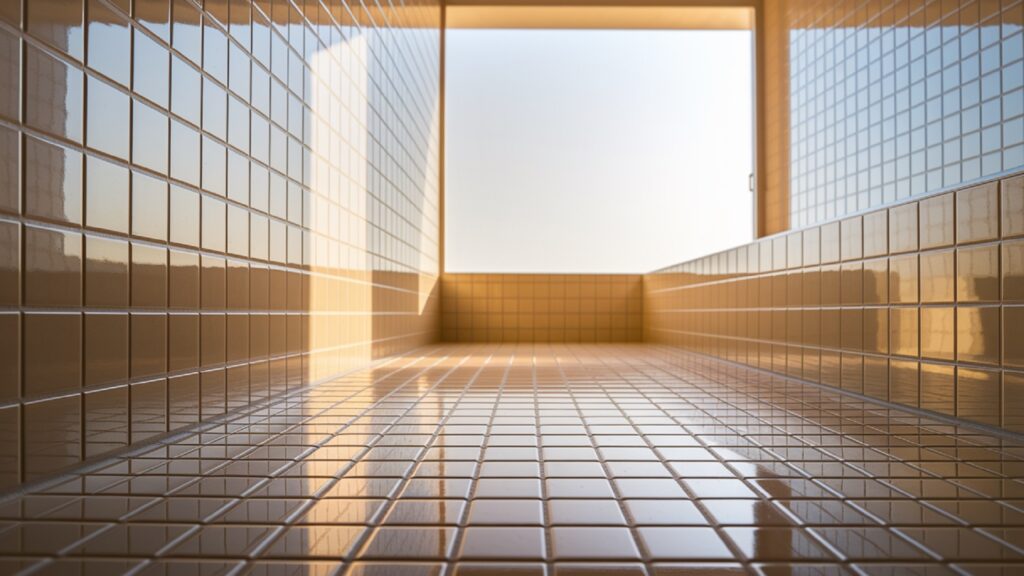
3. Easy Cleaning and Maintenance
One of the biggest advantages of bathroom tile is its easy-to-clean surface. Most tiles only require regular wiping or mopping with mild cleaners to stay spotless. Unlike painted surfaces, tiles don’t peel or require frequent repainting.
4. Wide Variety of Styles and Designs
Bathroom tile offers unparalleled design flexibility. From classic subway tiles to bold geometric patterns, you can select from countless shapes, colors, textures, and finishes. This variety allow you to personalize your bathrom’s look, whether you prefer timeless elegance or cutting-edge modernity.
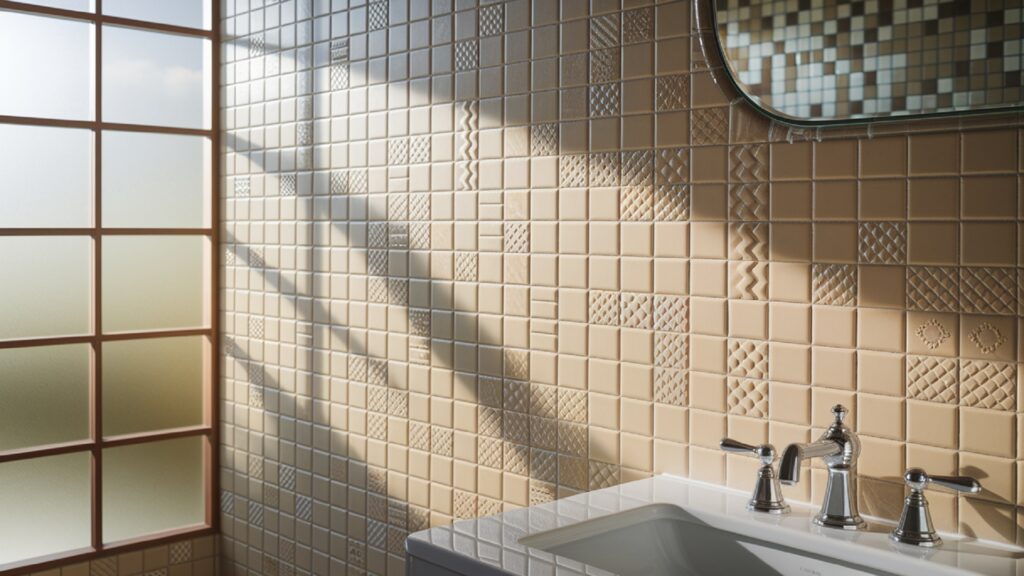
5. Heat Resistance and Comfort
Tiles are excellent conductors of heat, making them perfect for pairing with underfloor heating systems. This can increase comfort, especially in colder climates, without compromisng durability.
6. Value Addition to Your Home
Installing high-quality bathroom tile can increase the overall value of your property. A well-tiled bathroom is a strong selling point for prospective buyers and reflects well on the home’s upkeep.
How to Use Bathroom Tile Effectively
Selecting the right bathroom tile is only the first step toward a successful bathroom renovation. Using bathroom tile effectively involves careful planning, proper installation, and thoughtful maintenance to ensure both beauty and function last for years. Below are detailed steps and best practics for getting the most out of your bathroom tile:
1. Choose the Right Tile for Each Area
Not all tiles are created equal, and choosing the correct type for each part of your bathroom is crucial.
- Floors: Porcelain tile is the best choice for bathroom floors due to its hardness, low porosity, and slip resistance. Look for tiles rated for floor use with a slip-resistant finish (often marked as “R” rating or “COF” coefficient of friction).
- Walls: Ceramic tiles are ideal for walls. They’re lightweight and available in numerous colors and patterns. Natural stone tiles can also be used on walls, but require sealing.
- Showers and Wet Areas: Use porcelain or glazed ceramic tiles with waterproof grout. Glass tiles are popular for shower accents but may need extra care.
- Backsplashes and Accents: Glass and mosaic tiles add flair and personality here, creating visual interest and contrasting textures.
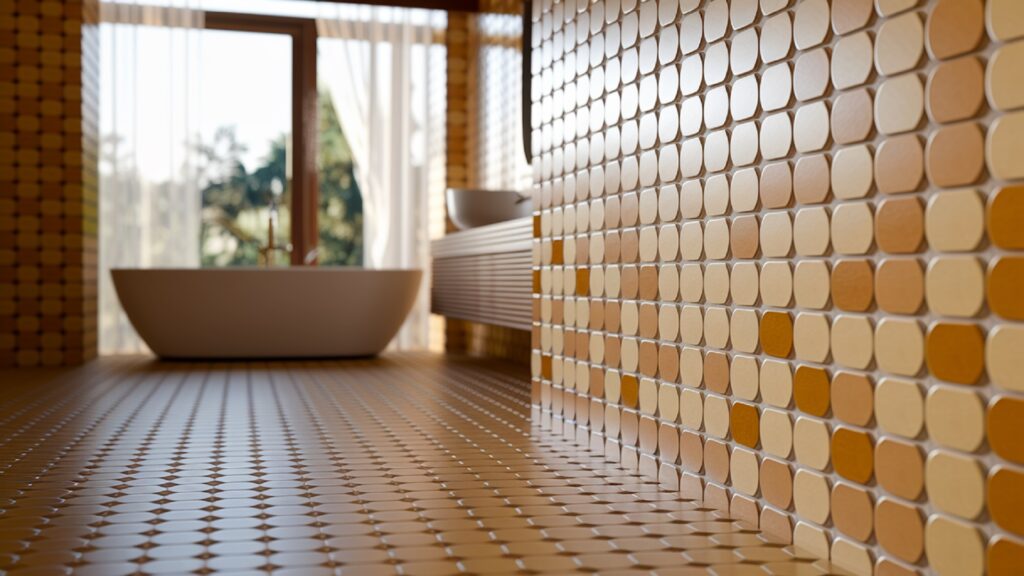
2. Plan Your Layout Thoughtfully
How you arrange your bathroom tile can change the entire vibe of the room. Here are some tips:
- Size matters: Larger tiles can make a small bathroom appear bigger. Conversely, small mosaic tiles work well on showr floors or for creating detailed patterns.
- Orientation: Lay rectangular tiles horizontally to widen the look of walls or vertically to add height.
- Patterns: Classic subway tile layout is timeless, but herringbone, chevron, or basketweave patterns add modern flair.
- Grout color: Use grout color to eithr blend with the tile for a seamless look or contrast for bold lines that highlight the pattern.
3. Prepare the Surface Correctly
Proper surface preparation is key to a long-lasting installation:
- Clean and dry: Ensure surfaces are free from dust, grease, and moisture.
- Level: Floors and walls must be flat to prevent tiles from cracking or popping loose.
- Waterproofing: Apply a waterprof membrane or barrier behind tiles, especially in wet zones like showers and tub surrounds.
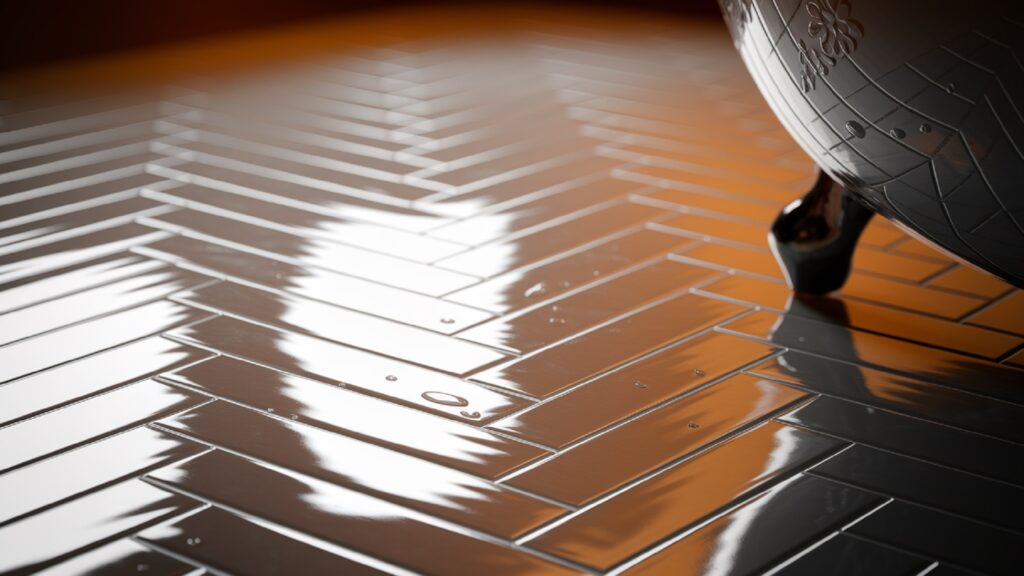
4. Use Quality Adhesives and Grout
The longevity of your bathroom tile depends on the materials used during installation:
- Adhesives: Choose a tile adhsive compatible with the tile material and the substrate (surface beneath the tile). For wet areas, use waterproof adhesives.
- Grout: Use waterproof, mold-resistant grout to prevent staining and mildew buildup. Epoxy grout is more durable but harder to apply than cement-based grout.
5. Hire a Professional Installer
Although DIY tile installation can be rewarding, mistakes are common and costly to fix. Professional tile installers bring experience, proper tools, and precision to the job, ensuring:
- Accurate cuts and alignment.
- Correct grout application.
- Proper sealing and finishing.
If budget is tight, consider installing wall tiles yourslf and hiring a pro for floors and wet zones.
Additional Tips for Effective Bathroom Tile Use
- Seal your grout regularly: Even waterproof grout can benefit from periodic sealing to maintain water resistance.
- Use trim and edging pieces: These finish tile edges neatly and protect them from chipping.
- Plan for expansion joints: Bathrooms experience temperature changes; leaving small gaps filled with flexible sealant prevents tile cracking.
Common Mistakes People Make
When it comes to bathroom tile, even small errors can lead to big problems down the line. Understanding common pitfalls can save you time, money, and frustration. Here are some of the most frequent mistaks homeowners and DIYers make with bathroom tile—and how to avoid them:
1. Choosing the Wrong Tile for the Application
One of the biggest mistakes is picking tiles without considering their intended use. For example, selecting a glossy ceramic tile with no slip resistance for a bathroom floor can be dangerous. Similarly, using unsealed natural stone in wet areas like showers may result in staining and water damage.
Tip: Always check the tile’s specifications for water absorption, slip resistance, and suitability for floors or walls.
2. Neglecting Surface Preparation
Failing to proprly clen, level, and waterproof the substrate before tiling is a commn error. Even the highest-quality tiles will fail prematurely if the base is uneven or damp.
Tip: Spend time prepring the surface well, including applying waterproof membranes in wet areas. This step ensures tile adhesion and prevents mold growth beneath the surface.
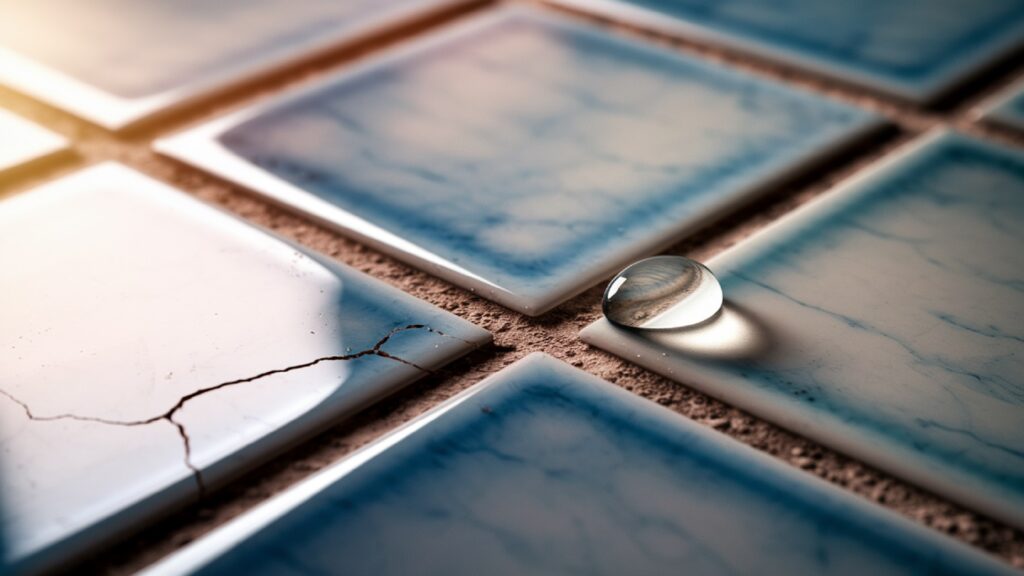
3. Incorrect Grout and Adhesive Choices
Using the wrong type of grout or adhesive can lead to cracked tiles, moldy grout lines, or loose tiles.
- Adhesive: Use waterproof, flexible adhesives in bathrooms.
- Grout: Avoid standard grout in wet zones; opt for epoxy or premixed waterproof grout to resist stains and moisture.
Tip: Consult product labels and manufacturer recommendations to match adhesives and grout with your specific tile.
4. Skipping Professional Installation for Complex Areas
Bathroom tiling, especially floors and showers, requires precise cuts, leveling, and sealing. DIY attempts without experience can cause uneven tile placement, poor drainage, and grout failures.
Tip: If your budget allows, hire a professional installer for floors and wet zones. For simpl wall tiles, DIY might be feasible with the right tools and patience.
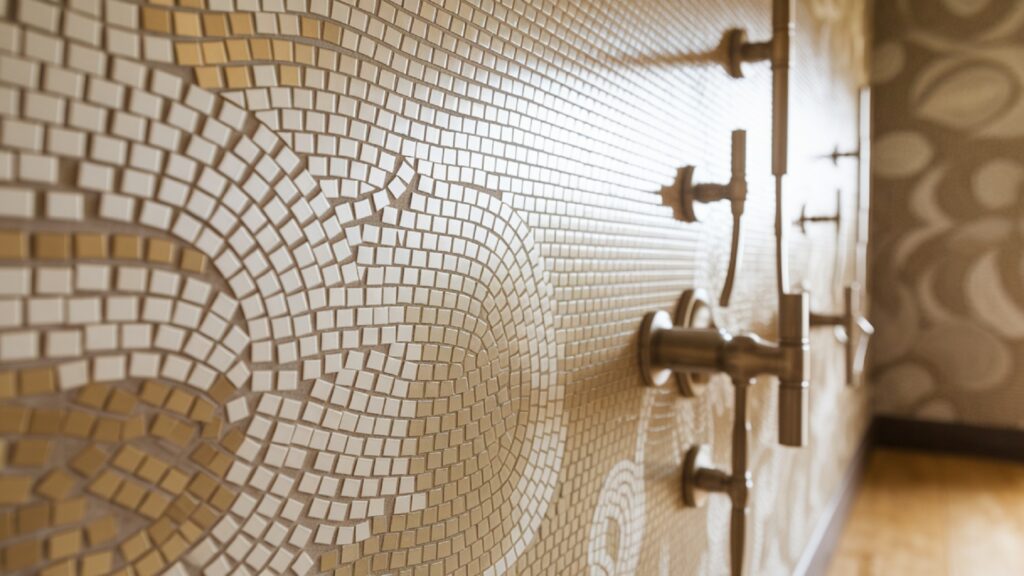
5. Overlooking Slip Resistance
Many homeowners prioritize aesthetics over safety. Smooth, glazed tiles might look great, but become slippery when wet, posing a fall risk.
Tip: Choose tiles with a matte finish or those rated for slip resistance on floors, particularly in showers and near bathtubs.
6. Using Inappropriate Grout Color
Choosing grout color without considering its maintenance and visual effect can cause dissatisfction. Light grout shows dirt and stains easily, while dark grout can make spaces look smaller.
Tip: Pick a grout color that complements the tile and fits your cleaning routine. Neutral tones often provide a balanced look.
7. Ignoring Expansion Joints and Movement Gaps
Tiles and grout can crack if no room is lft for the natural expansion and contraction caused by temperature and humidity changes.
Tip: Leave expansion joints around the perimeter and where the tile meets other materials. Fill these with flexible silicone sealants to absorb movement.
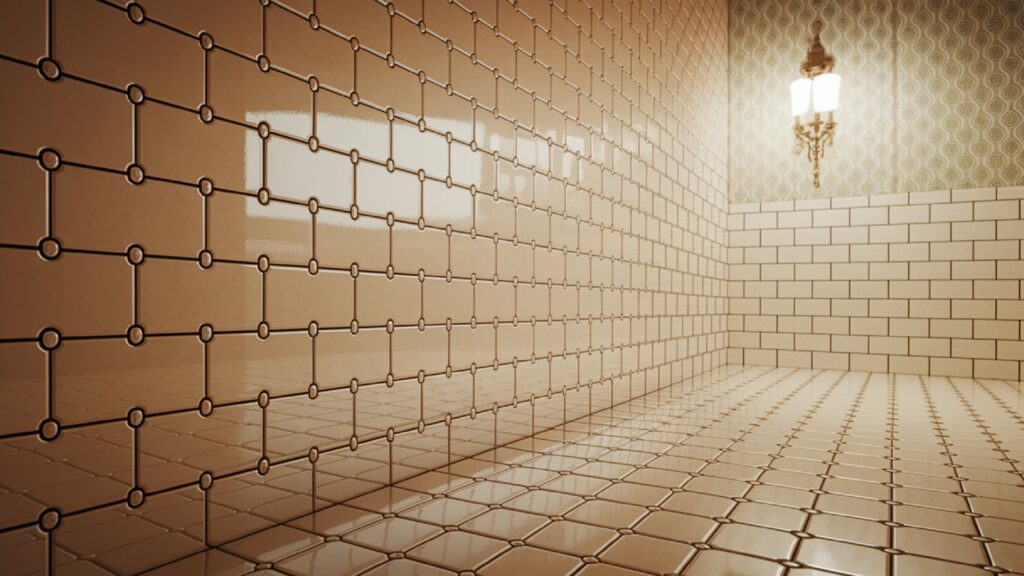
FAQs About Bathroom Tile
What is the best type of bathroom tile for floors?
Porcelain tile is generally the best option for bathroom floors because it is dense, highly durable, and has low water absorption. It can handle heavy foot traffic and is resistant to cracks and chips. Porclain tiles often come with slip-resistant finishes, which enhanc safty in wt area. Ceramic tiles are usually better suited for walls but can work on floors if rated for such use.
How do I maintain and clean bathroom tile?
Routine cleaning of bathroom tile is simple. Use a mild detergent or a specialized tile cleaner with warm water and a soft mop or cloth. Avoid harsh or abrasive cleaners that can dull the tile’s finish or damage grout. For grout lines, using a grout cleaner or a mixture of baking soda and water can help remove stains. Sealing grout annually also helps prevent mold and discoloration.
Can bathroom tile help prevent mold and mildew?
Yes, one of the primary benefits of bathroom tile is its resistance to water and moisture. Properly installed and sealed bathroom tiles, combined with waterproof grout, reduce water penetration and limit the growth of mold and mildew. However, regular ventilation and cleaning are still necessary to keep mold at bay.
How long does bathroom tile last?
Bathroom tile can last anywhre from 20 to 50 years or more with propr care. The lifespan depends on factors like the type of tile, quality of installation, and maintenance routines. Porcelain tiles typically last longer due to their durability, while natural stone tiles may require more upkeep.
Is it possible to install bathroom tile myself?
While DIY installation is possible for those with experience and patience, bathroom tiling requires skill and precision, especially in wet zones like showers and floors. Mistakes can lead to costly repairs later. Hiring a professionl installr is recommended for complex layouts and wet areas to ensure longevity and safety.
Author Remarks
Bathroom tile is an indispensable compnent of any bathroom design, offering a blnd of durability, moisture resistance, and aesthetic versatility. From the wide range of materials like ceramic, porcelain, natural stone, and glass, to the myriad of sizes, colors, and patterns, bathroom tile allows homeowners to tailor their spaces to fit both practical needs and personal style.
Understanding what bathroom tile is and how it functions lays the foundation for making smart choices that can significantly enhance your bathroom’s longevity and beauty. The benefits of bathroom tile extend far beyond its decorative appeal; it protects your home from water damage, resists mold and mildew, and offers a surface that is easy to clean and maintain.
Using bathroom tile effectively involves selecting the right type of tile for each bathroom area, carefully planning your tile layout, preparing surfaces properly, and using the appropriate adhesives and grout. Avoiding common mistakes such as choosing unsuitabl tiles, neglecting waterproofing, or ignoring slip resistance ensures a safer and longer-lasting bathroom environment.
Being aware of common pitfalls and how to avoid them can save time, money, and hassle. And, with proper care and maintenance, bathroom tile can remain pristine for decades, increasing your home’s value and your enjoyment of the space.
You’re undertaking a full bathroom remodel or simply updting a small section, investing in the right bathroom tile—and installing it correctly—makes all the difference. By applyng the knowledge shared in this guide, you can create a stunning, functional bathroom that meets your needs and stands the test of time.
For further inspiration and expert advice, consider exploring additional home renovation resourcs or consulting with tile professionls who can guide you through your project.

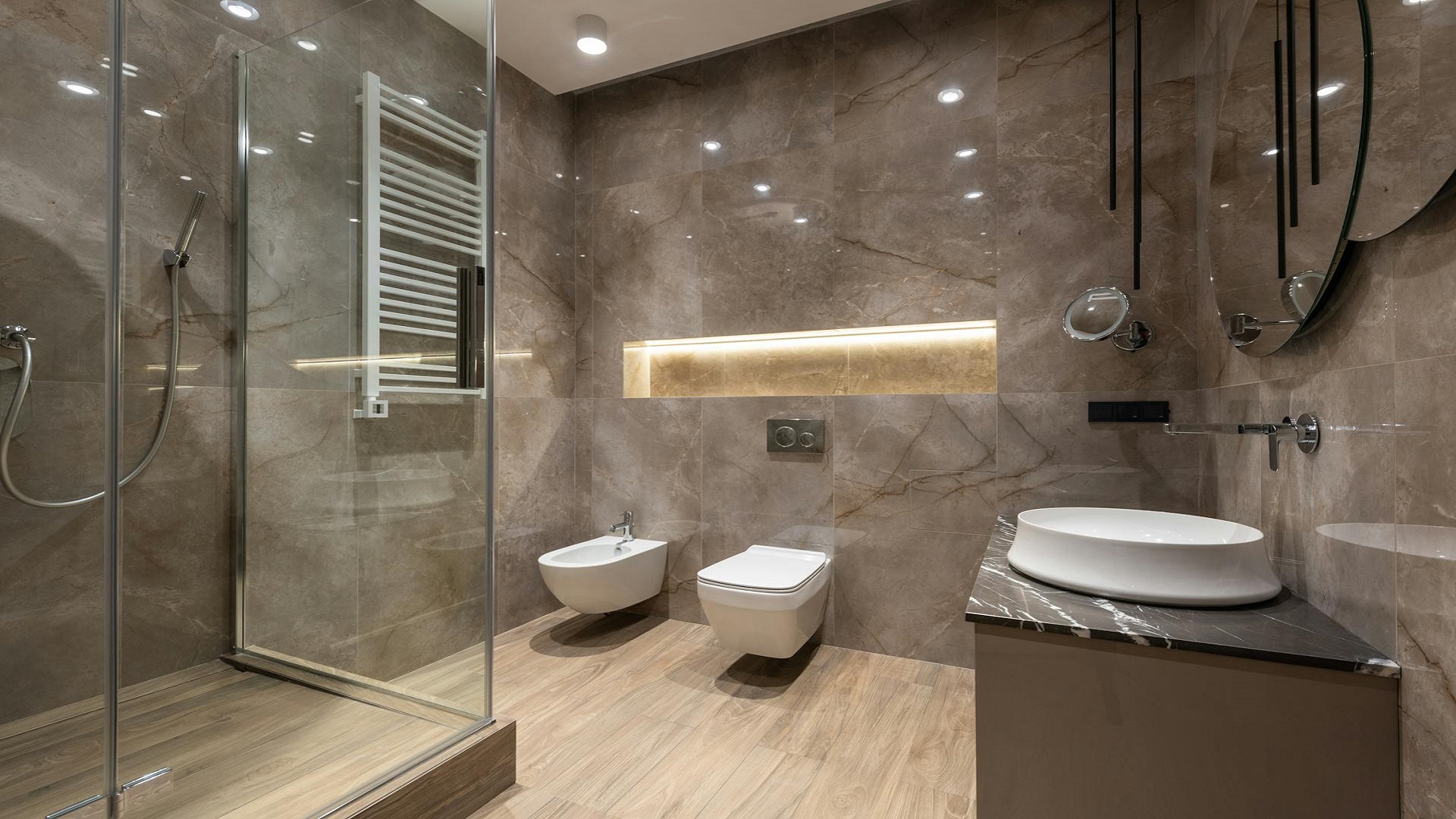
2 Comments